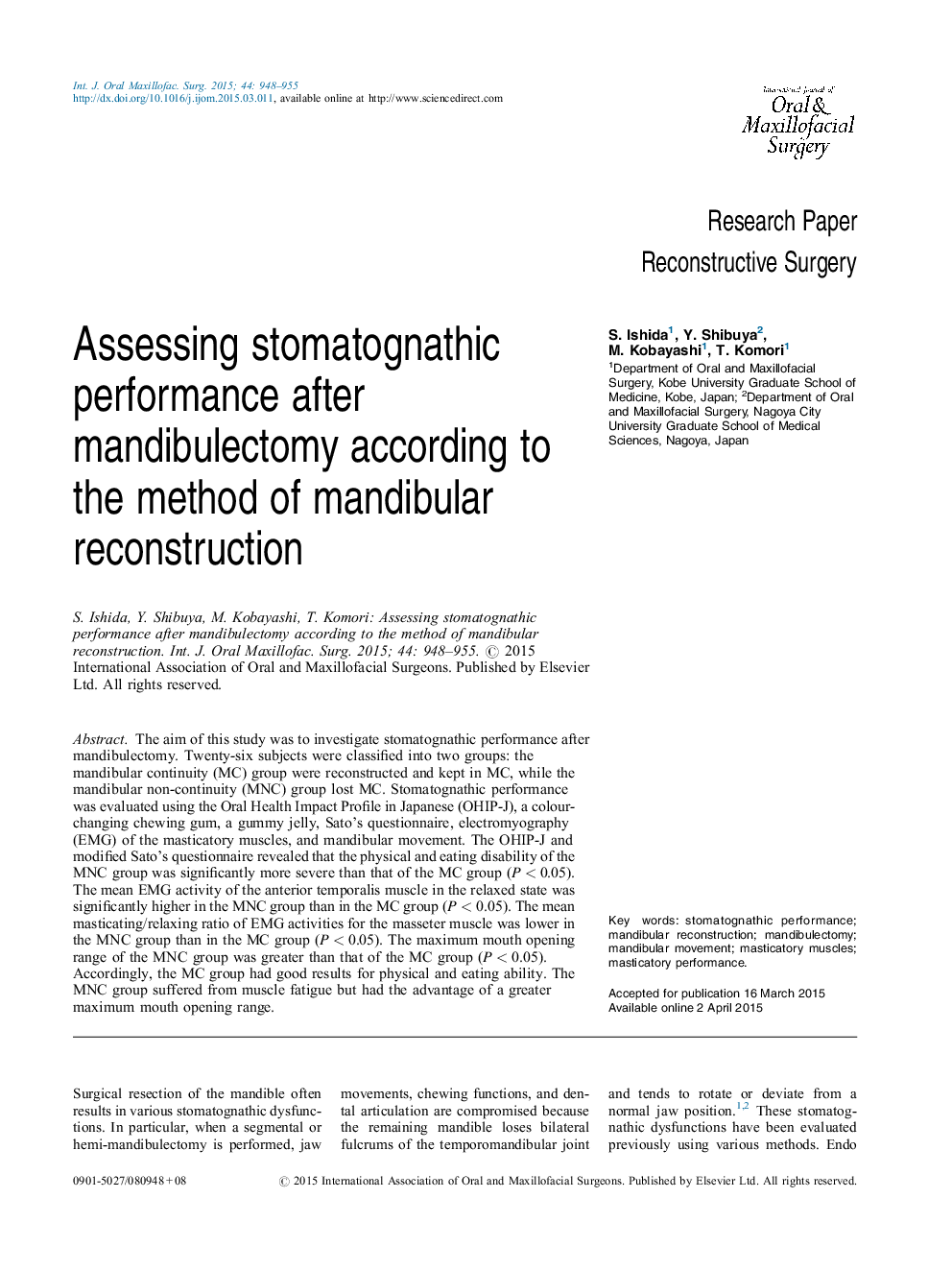| Article ID | Journal | Published Year | Pages | File Type |
|---|---|---|---|---|
| 3132261 | International Journal of Oral and Maxillofacial Surgery | 2015 | 8 Pages |
The aim of this study was to investigate stomatognathic performance after mandibulectomy. Twenty-six subjects were classified into two groups: the mandibular continuity (MC) group were reconstructed and kept in MC, while the mandibular non-continuity (MNC) group lost MC. Stomatognathic performance was evaluated using the Oral Health Impact Profile in Japanese (OHIP-J), a colour-changing chewing gum, a gummy jelly, Sato's questionnaire, electromyography (EMG) of the masticatory muscles, and mandibular movement. The OHIP-J and modified Sato's questionnaire revealed that the physical and eating disability of the MNC group was significantly more severe than that of the MC group (P < 0.05). The mean EMG activity of the anterior temporalis muscle in the relaxed state was significantly higher in the MNC group than in the MC group (P < 0.05). The mean masticating/relaxing ratio of EMG activities for the masseter muscle was lower in the MNC group than in the MC group (P < 0.05). The maximum mouth opening range of the MNC group was greater than that of the MC group (P < 0.05). Accordingly, the MC group had good results for physical and eating ability. The MNC group suffered from muscle fatigue but had the advantage of a greater maximum mouth opening range.
